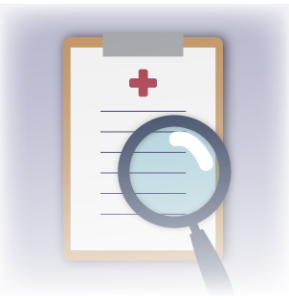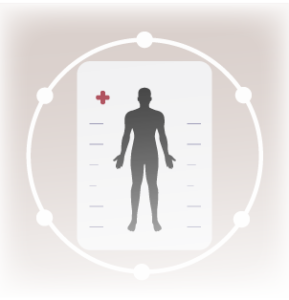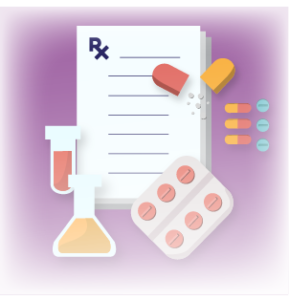Top tips:
- Assess and treat underlying causes of constipation; including opioid induced constipation
- An abdominal flat plate can be useful to identify severity of significant fecal loading and rule out bowel obstruction
- Non-pharmacological and pharmacological interventions are often required together.
- Be aware that constipation may trigger hepatic encephalopathy
Constipation Diagnostic criteria – at least 2 symptoms for at least 3 of the last 6 months:
≤ 3 spontaneous BMs per week ; Hard or lumpy stools (Bristol type 1-2), Straining during defecation ; Sensation of incomplete evacuation ; Sensation of anorectal blockage ; Manual maneuvers to facilitate defecation.
With severe constipation, additional signs and symptoms can include nausea/vomiting, abdominal cramping, distension or overflow diarrhea.
The more common causes of nausea in this population include the following:
- Low fiber intake
- Low fluid intake
- Medications (e.g. opioids, ondansetron, oral iron supplements, antacids, calcium supplements, beta blockers, diuretics).
- Metabolic disturbances (e.g. hypercalcemia, hypokalemia, hypothyroidism, diabetes)
- Pre-existing chronic bowel conditions (e.g. Irritable Bowel Syndrome)
- Consider Alarm features that may suggest colorectal malignancy
- Increasing Fibre intake – if needed, consider referral to a dietitian for nutritional counseling around high fiber foods. Patients should be aware to start low and go up gradually to avoid issues with bloating or gas production (see AHS Constipation handout for patients).
- Exercise (see CCAB exercise page)
- Increasing hydration (2.0 L/day for women and 3.0 L for men, provided no fluid restrictions, e.g. with severe hyponatremia)
- Regular toileting upon waking and post meals
Note: Surfactant laxatives such as Colace have been taken off most formularies due to insufficient evidence.
These are synthetic polysaccharides or cellulose derivatives that absorb water in the gut to increase stool volume and mass. First-line laxatives. Must be taken with adequate fluids. Do not use for opioid-induced constipation.
| Medication: | Recommended Dose | Additional information |
|---|---|---|
| Psyllium (Metamucil®) | 1 tsp daily (titrate up as tolerated, following product instructions) |
|
These are poorly absorbable or non-absorbable sugars that increase stool frequency by absorbing water into the bowel. Caution should be applied as excess use can potentially result in volume and electrolyte loss.
| Medication: | Recommended Dose | Additional information |
|---|---|---|
| (Before use, see the product monograph, for complete side effect list) | ||
| Polyethylene glycol (PEG 3350) | 17 grams PO OD dissolved in 250 mL of liquid. Max: Titrate to effect or max 68 g/day in divided doses. |
First line if no hepatic encephalopathy -Osmotic Laxative -Onset of action: within 12 hours -Flatus, diarrhea, nausea, abdominal pain, bloating (less than others |
| Lactulose | 15-30 mL PO OD to TID – starting dose
2-3 soft bowel movements per day |
First line if hepatic encephalopathy -Osmotic Laxative -Onset of action: 24-48 hours -Abdominal cramping, bloating, flatulence -If no bowel movements despite lactulose, consider dysmotility and additional workup. |
Stimulant laxatives increase intestinal motor activity & alter electrolyte transport. May cause cramping/ nausea
They should only be used for short-term treatment and not as maintenance therapy unless at end of life.
| Medication: | Recommended Dose | Additional information |
|---|---|---|
| (Before use, see the product monograph, for complete side effect list) | ||
| Sennosides (Senokot®) | 8.6 mg-17.2 mg (1-2 tablets) PO nightly. Max: 34.4 mg (4 tablets) PO BID |
-Stimulant laxative -Onset of action: 6-24 hours - Abdominal cramps, diarrhea, and/or nausea |
| Bisacodyl | Oral: 5-15 mg PO daily Rectal: 10 mg PR daily |
-Stimulant laxative -Onset of action: 6-12 hours (oral), 25 min-1 hour (PR) -Abdominal cramping, nausea |
If standard laxatives are ineffective, can see AHS Constipation Primary Care Pathway or talk to GI specialist regarding possible newer therapies (e.g. Secretagogues such as Linaclotide OR Prokinetics such as Prucalopride). These are more costly and may not be covered by existing drug plans.
In difficult to treat cases, an abdominal flat plate should be carried out in order to identify fecal loading, stool distribution and determine if a full bowel cleanout is needed before starting or changing to a new bowel regimen.
If there is stool impaction (solid immobile stool in the rectosigmoid), carry out manual fragmentation (if needed), followed by a soap suds enema. Once the stool impaction is cleared, consider a Polyethylene Glycol 3350 (PEG) bowel cleanout.
If it is evident that constipation is not multifactorial, but caused by opioids only, can attempt treatment per (Fraser Health Document LINK)
- Always prescribe prophylactic laxatives alongside an opioid prescription. Avoid bulk forming laxatives.
- While Domperidone and Maxeran can help with constipation in the occasional patient, these prokinetic agents are generally ineffective in the colon
- Re-evaluate pain scores, response to opioid, and need for current opioid dose.
- Decrease the opioid dose if possible.
- If opioid doses are increasing, the dose of laxatives often needs to be increased as well. Evaluate tolerance frequently, holding the laxatives for 1 – 2 days if laxative associated diarrhea occurs
Peripherally acting μ-opioid receptor antagonists (PAMORAs): This class of medications are effective against OIC and has limited ability to cross blood brain barrier (e.g. alvimopan, naloxegol, methylnatrexone, axelopran).
Adverse side effects include diarrhea, abdominal pain, nausea and vomiting.
Consider GI specialty consultation if these medications are required.
Patients continue to produce stool until the last hours of life. Continue stimulant suppositories q3 days if no bowel movement to prevent abdominal discomfort.
This section was adapted from content using the following evidence based resources in combination with expert consensus. The presented information is not intended to replace the independent medical or professional judgment of physicians or other health care providers in the context of individual clinical circumstances to determine a patient’s care.
Authors (Alphabetical): Amanda Brisebois, Sarah Burton-Macleod, Ingrid DeKock , Martin Labrie, Noush Mirhosseini, Mino Mitri, Kinjal Patel, Aynharan Sinnarajah, Puneeta Tandon
Thank you to pharmacists Omer Ghutmy and Meghan Mior for their help with reviewing these pages.
Helpful Links:
- Hepatic Encephalopathy:http://cirrhosiscare.ca/treatment-provider/hepatic-encephalopathy-hcp/
- Opioid induced constipation: Fraser Health Opioid Induced Constipation
- Alberta Health Services Constipation pathway: https://www.albertahealthservices.ca/assets/about/scn/ahs-scn-dh-pathway-constipation.pdf
- Alberta Health Services Patient Handout for Managing constipation: https://www.albertahealthservices.ca/assets/info/nutrition/if-nfs-managing-constipation.pdf
References:
- Davison SN on behalf of the Kidney Supportive Care Research Group. Conservative Kidney Management Pathway; Available from: https//:www.CKMcare.com.
- Pannemans J, Vanuytsel T, Tack J. New developments in the treatment of opioid-induced gastrointestinal symptoms. United European Gastroenterol J. 2018 Oct;6(8):1126-1135. doi: 10.1177/2050640618796748. Epub 2018 Aug 27. PMID: 30288274; PMCID: PMC6169055.
- Pantham G, Post A, Venkat D, Einstadter D, Mullen KD. A New Look at Precipitants of Overt Hepatic Encephalopathy in Cirrhosis. Dig Dis Sci. 2017 Aug;62(8):2166-2173. doi: 10.1007/s10620-017-4630-y. Epub 2017 May 30. PMID: 28560484.
- Pergolizzi JV Jr, Christo PJ, LeQuang JA, Magnusson P. The Use of Peripheral μ-Opioid Receptor Antagonists (PAMORA) in the Management of Opioid-Induced Constipation: An Update on Their Efficacy and Safety. Drug Des Devel Ther. 2020 Mar 11;14:1009-1025. doi: 10.2147/DDDT.S221278. PMID: 32210534; PMCID: PMC7075239.
- Starreveld JS, Pols MA, Van Wijk HJ, Bogaard JW, Poen H, Smout AJ. The plain abdominal radiograph in the assessment of constipation. Z Gastroenterol. 1990 Jul;28(7):335-8. PMID: 2238762.






